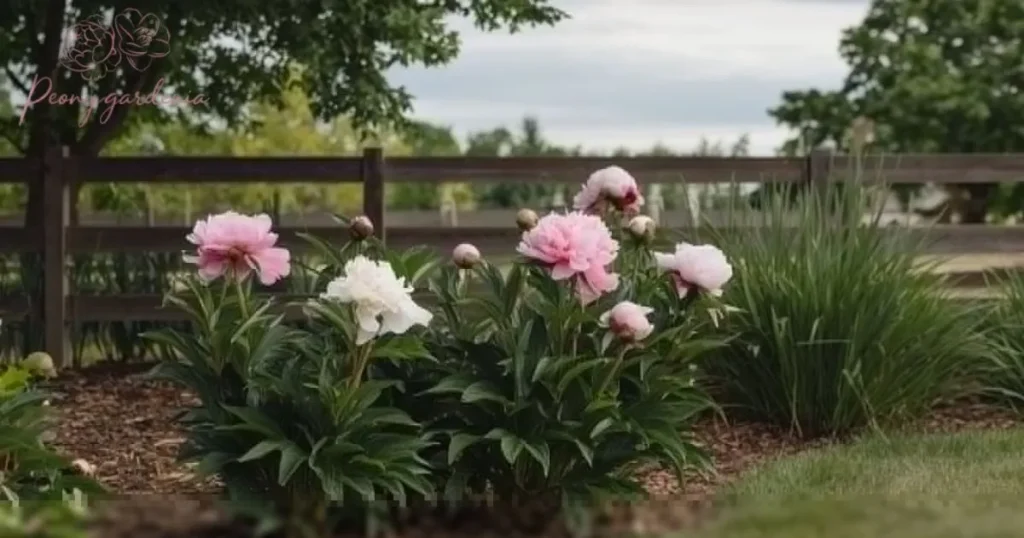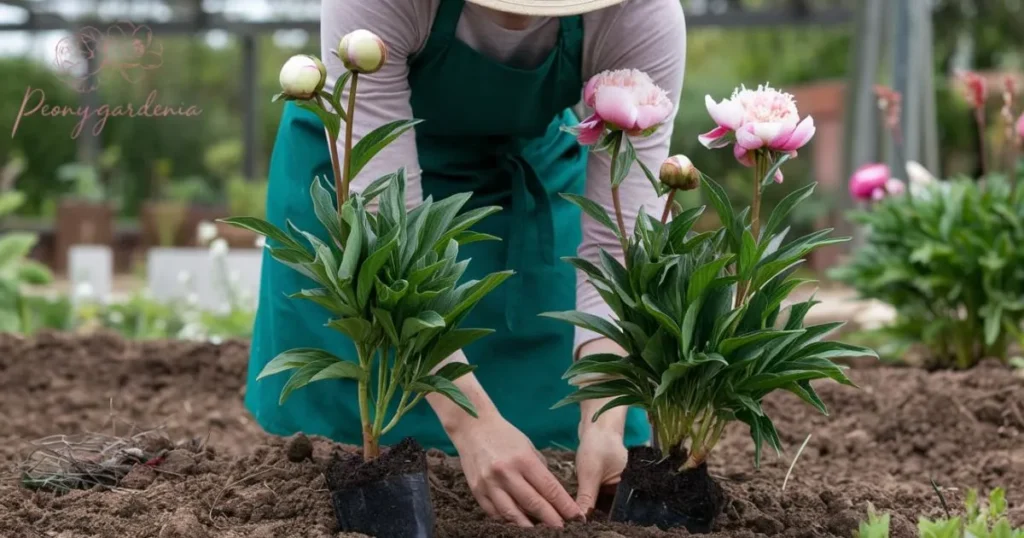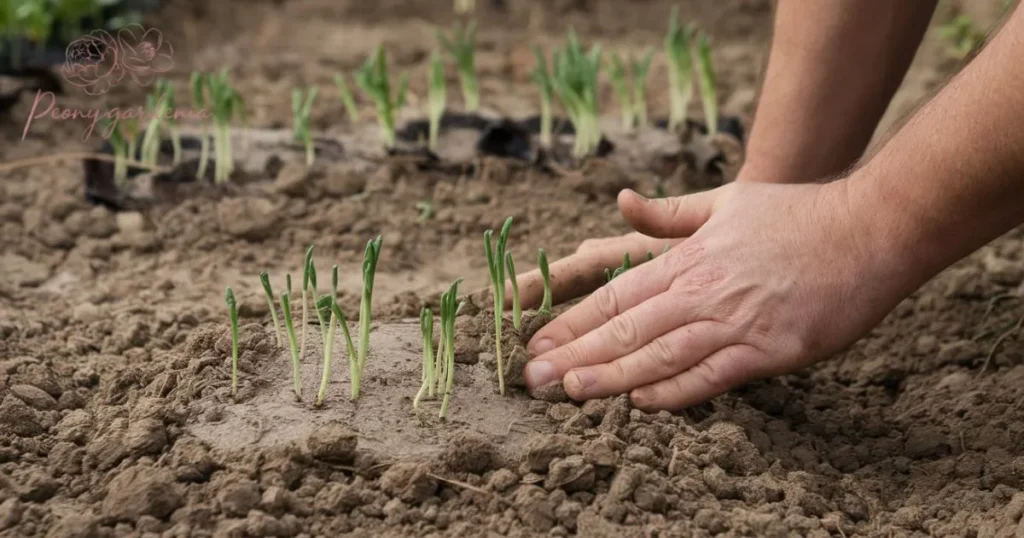Peonies are beloved for their stunning blooms and sweet fragrance, making them a popular choice for gardens. However, before these beautiful flowers can bloom, gardeners eagerly await the first signs of life in early spring-peony shoots.
The appearance of peony shoots marks the start of the growing season, and their timing can vary depending on the climate, soil, and variety of peony. In this article, we’ll explore when you can expect peony shoots to emerge and share helpful tips on how to encourage earlier growth for a vibrant garden display.
Peony Shoots and Their Timing
Peony shoots typically emerge in early spring, marking the plant’s awakening after winter dormancy. The timing varies depending on the region and climate, with shoots appearing earlier in warmer areas and later in colder zones.
As temperatures rise above 50°F (10°C), the shoots break through the soil, often showing a reddish or pink hue. This phase signals the start of the growing season, and healthy shoots are a sign of well-prepared soil and favorable conditions. Gardeners eagerly anticipate this moment, as it sets the stage for the stunning blooms peonies are known for later in the season.
Temperature’s Role in Peony Growth

Temperature plays a vital role in the growth of peonies. These plants require a period of cold weather during winter to prepare for their spring growth. This chilling period signals the peony’s dormancy to end and activates the growth of shoots.
Once temperatures begin to rise in early spring, typically above 50°F (10°C), the shoots emerge from the soil. If winters are not cold enough, peonies may struggle to bloom. On the other hand, sudden temperature drops or late frosts in spring can damage the tender shoots. Consistent seasonal temperatures are key to healthy peony development and vibrant blooms.
Read More: How to Transplant Peonies?
Soil Conditions for Healthy Shoots
Peonies thrive in well-drained, nutrient-rich soil to ensure healthy shoots and strong growth. The soil should be loose, allowing water to drain easily and preventing root rot. Compacted or overly wet soil can delay the emergence of peony shoots or weaken the plant.
Adding organic matter like compost can improve soil quality, ensuring it retains moisture without becoming waterlogged. It’s also important to maintain a slightly acidic to neutral pH level, around 6.5 to 7.0, for optimal growth. Regularly checking and improving soil conditions helps peonies establish healthy roots, leading to vigorous shoots and vibrant blooms during the growing season.
Sunlight and Peony Shoots

Sunlight is essential for the healthy growth of peony shoots. Peonies require at least 6 hours of direct sunlight daily to thrive. Adequate sunlight helps shoots grow stronger and promotes vibrant blooms later in the season. If planted in a shady location, the shoots may become weak or struggle to emerge.
For best results, choose a sunny spot in your garden that provides consistent light throughout the day. However, in regions with intense summer heat, some afternoon shade can protect the plant. Ensuring your peonies get the right balance of sunlight will set the stage for healthy growth and beautiful flowers.
Peony Varieties and Shoot Timing
Peonies come in various types, and their shoot timing can differ slightly based on the variety. Herbaceous peonies, which die back in winter, typically produce shoots in early spring as the weather warms. Tree peonies, which have woody stems, may sprout a little earlier since they don’t fully die back in winter.
Intersectional or Itoh peonies, a hybrid of herbaceous and tree peonies, usually follow the herbaceous timeline. Climate and growing conditions also influence timing, so it’s essential to know your specific peony variety. Understanding these differences helps gardeners anticipate when to expect new growth and plan care accordingly.
Caring for Peony Shoots

Caring for peony shoots is essential to ensure healthy growth and vibrant blooms. Once the shoots appear in early spring, protect them from late frosts by covering them with a light cloth if needed. Water your peonies regularly but avoid overwatering, as soggy soil can cause root rot.
Use a balanced fertilizer in early spring to nourish the young shoots, helping them grow strong and resilient. Keep the area around the plant free from weeds and pests, such as slugs or snails, which can damage the tender shoots. With proper care, your peonies will thrive and produce stunning flowers.
Pests and Peony Shoots
Peony shoots are vulnerable to pests like slugs, snails, and aphids, which can damage the tender new growth. Slugs and snails often feed on young shoots, leaving holes and stunting their development. Aphids can cluster on shoots, sucking sap and weakening the plant.
To protect your peonies, monitor the plants regularly, especially during early spring when shoots first emerge. Handpick pests or use natural deterrents like crushed eggshells around the base of the plant. Organic sprays or insecticidal soap can help control aphids. Maintaining healthy soil and proper plant care also strengthens peonies, making them more resistant to pests.
Signs of Healthy Peony Shoots

Healthy peony shoots show several key signs that indicate strong growth. When they first emerge, they are usually a vibrant red or pink color, signaling that the plant is active and thriving. As the shoots grow taller, they turn green, which is a good sign of healthy development.
The shoots should be firm and upright, not wilting or bending over. Additionally, healthy shoots are free from discoloration, spots, or damage. If the shoots look pale or weak, it could mean they are stressed due to poor soil, lack of sunlight, or improper watering. Proper care helps peony shoots stay strong.
How to Encourage Early Shoots

To encourage early peony shoots, it’s important to provide the right growing conditions. Start by planting peonies in a sunny spot, as they need at least six hours of sunlight daily to thrive. Ensure the soil is well-drained and rich in organic matter, which supports healthy root development.
Adding a layer of mulch in late fall or early winter can help insulate the soil, keeping it warm and encouraging early growth. Additionally, avoid heavy pruning in winter, as leaving some old stems can protect the plant from frost and help stimulate the emergence of shoots in early spring.
Conclusion
Peony shoots appear in early spring, signaling the end of winter dormancy. As the weather warms and temperatures rise above 50°F (10°C), the dormant roots begin to push out new growth. In mild climates, shoots may emerge as early as late March or early April, while in colder regions, they may not appear until mid to late spring.
The exact timing can vary depending on the local climate and the type of peony. Herbaceous peonies tend to emerge slightly later than tree peonies, which often show signs of growth earlier. Gardeners should monitor their plants and be patient, as the shoots may take a few weeks to fully grow, especially if the weather is cool or unpredictable.
FAQs
When do peony shoots typically appear?
Peony shoots usually appear in early spring, around March or April, depending on the climate.
Do peony shoots appear at the same time every year?
No, the timing can vary based on weather conditions and location.
Can peony shoots appear in winter?
Peony shoots do not typically appear in winter; they stay dormant until spring.
How can I tell if my peony shoots are healthy?
Healthy shoots are usually red or pink when they first appear and turn green as they grow.
What can delay the appearance of peony shoots?
Cold temperatures, poor soil conditions, or late frosts can delay the appearance of peony shoots.









